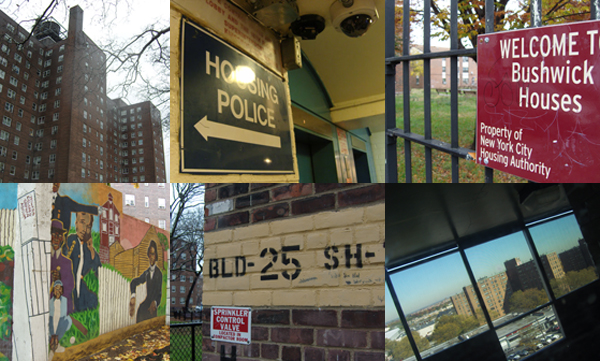
Scenes from NYCHA developments around the city. Clockwise from top left: Red Hook, Wagner, Bushwick, Castle Hill, Ravenswood, Kingsborough.
There have not been many good days for NYCHA over, oh, the past several decades. First there was that irritating 70-year right-wing campaign to first undermine public housing and then blame it for being undermined. More recently, the feds, state and city all decided someone else should pay to maintain the public housing they’d built. Elevators died. Boilers failed. Calls for privatization mounted.
Tuesday represented a stark break from that trend. First came word that state lawmakers had set aside $100 million in capital funding for the housing authority, which shelters more than 400,000 people. Then it was announced that FEMA would award $3 billion to NYCHA for Sandy-related work.
According to a City Hall press release, half the FEMA money will be used to fix problems caused by Sandy and the rest will go to improve resiliency at NYCHA developments.
The new money is the good news. The bad news? “NYCHA requires more than $18 billion beyond the funding announced today to address its broader unmet capital needs across its portfolio of more than 330 developments,” City Hall said. “Eroding annual support for NYCHA has resulted in more than $1 billion in lost funding in recent years, hindering the Authority’s ability to keep its buildings in a state of decent repair.”
Advocates are looking to the city to follow the federal and state lead and add its own increased capital money to NYCHA. In a statement released Tuesday, the Community Service Society of New York a City Limits funder) said it hoped next week “to be able to affirm the city’s $300 million commitment and look toward a period of local and state reinvestment in NYCHA and its residents.”
In May, NYCHA will release its Next Generation NYCHA plan, which is expected to chart a way to use the authority’s assets to leverage more money—possibly including some version of the abandoned Bloomberg-era effort to develop market-rate housing on open space owned by NYCHA.








